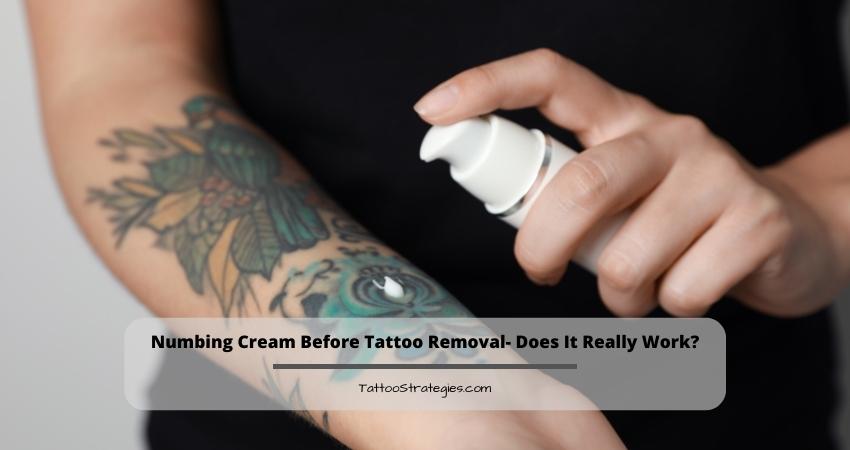
Okay, so you’re thinking about getting some fresh ink.
But the thought of that needle buzzing away is kinda freaking you out, right?
Totally get it.
The big question on your mind is probably: Can I use numbing cream on my hand before a tattoo?
Let’s break it down, friend.
The Tattoo Numbing Cream Conversation: Is It Even Allowed?
First things first: you gotta ask your artist.
Seriously.
Different artists have different policies.
Some are totally cool with it.
Others? Not so much.
Why the hesitation from some artists?
- It can affect the skin’s texture. This can make it harder for the artist to work and might even impact how the ink settles.
- It might contain ingredients that interfere with the tattoo process. Some creams can cause swelling or other reactions.
- They might have experience with creams that just… don’t work. Leaving them to deal with a frustrated (and still feeling) client.
I once knew a guy who used a numbing cream without telling his artist.
Big mistake.
The artist had to stop halfway through because the skin was reacting weirdly.
Awkward and a waste of everyone’s time.
So, You Got the Green Light. Now What? Choosing the Right Cream.
Okay, your artist says "go for it." Sweet!
But don’t just grab any old tube off the shelf.
Here’s what to look for:
- Lidocaine is your friend. This is a common numbing agent. Look for a cream with a decent percentage.
- Read reviews. See what other people have experienced with the cream.
- Consider the application area. Some creams are better suited for certain areas of the body.
- Check for allergies. Make sure you aren’t allergic to any of the ingredients.
Pro Tip: Do a patch test 24 hours before you plan to use the cream. Apply a small amount to your skin to see if you have any reaction.
How to Use Numbing Cream Like a Pro
Alright, you’ve got your cream, you’ve done your patch test. Time to numb that hand!
- Clean the area. Wash your hand thoroughly with soap and water.
- Apply a thick layer of cream. Don’t be stingy! You want a good coating.
- Wrap it up. Use plastic wrap to cover the area. This helps the cream absorb better and prevents it from drying out.
- Wait. Follow the instructions on the cream. Usually, you’ll need to wait about an hour.
- Wipe it off. Before your artist starts, wipe off all the cream with a clean cloth.
Important: Don’t leave the cream on for longer than recommended. It can actually have the opposite effect and make your skin more sensitive.
Numbing Cream on Hand Tattoos: Realistic Expectations
Okay, let’s be real: numbing cream isn’t magic.
It might not completely eliminate the pain.
It might just take the edge off.
Think of it like this: it’s like turning down the volume on a really loud song.
You can still hear it, but it’s not as intense.
Also, hand tattoos are notoriously painful.
The skin is thin, and there are a lot of nerve endings.
So, even with numbing cream, you might still feel something.
Alternatives to Numbing Cream
If your artist isn’t keen on numbing cream, or if you’re looking for other ways to manage the pain, here are a few ideas:
- Take breaks. Don’t be afraid to ask for a break if you need one.
- Stay hydrated. Dehydration can make pain worse.
- Bring a distraction. Listen to music, watch a movie, or chat with your artist.
- Focus on your breathing. Deep, slow breaths can help you relax.
FAQ About Tattoo Numbing Cream
- Does numbing cream affect the healing process? Potentially. Some creams can interfere with healing. Talk to your artist and follow aftercare instructions carefully.
- Can I use numbing cream on other body parts? Yes, the process is the same. Always check with your artist first.
- Where can I buy numbing cream? You can find it at pharmacies, online retailers, and sometimes tattoo supply shops.
- Is numbing cream safe? Generally, yes, when used as directed. But always do a patch test and talk to your doctor if you have any concerns.
So, back to the original question: Can I use numbing cream on my hand before a tattoo? The answer is: it depends. Talk to your artist, choose the right cream, and follow the instructions carefully. Good luck with your new ink!
Leave a Reply